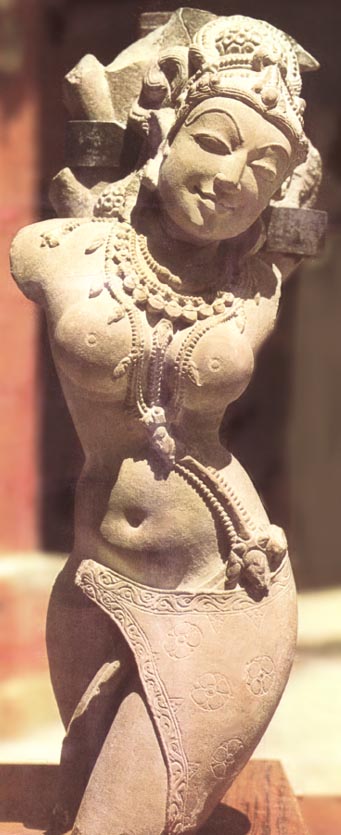 One of the most striking features of Hinduism (to western eyes)
is the lack of demarcation between spirit and flesh.
One of the most striking features of Hinduism (to western eyes)
is the lack of demarcation between spirit and flesh.
This is immediately apparent when one comes across carvings of
Yaksha (male) or Yakshi (female) which are nature spirits, images
of fertility and abundance; or Vrikashaka (wood nymphs).
They are typically extremely voluptuous, unreserved in their demeanour,
and lacking substantial clothing.
These are quite at odds with the demeanour of modern-day Hindus,
many of whom, could be considered extremely reserved or even inhibited,
by comparison.
The statue at left, now unfortunately only a fragment, represents a shalabhanjika, grasping a branch of a Sal tree.
The anatomy is carefully studied, and the sculpture is of an extremely
high quality, indicating this is more than just an ornamental
figure. There can be little doubt, that this Venus is one of the
finest Indian interpretations of the feminine form.
The carving of Yakshi, over time became bolder, and the forms
- particularly the large breasts and hips became much rounder
and more sensuous.
This appreciation of female secondary sexual characteristics was
further augmented over time with the development of the tribangha
or triple-bend-pose.

Sandstone yakshi, c100 AD
This pose has become one of the most familiar motifs of Indian art; as has the pearl hip-belt, the necklace which passes between the breasts, and copious use of jewellery around the head, wrists and ankles.
Back
